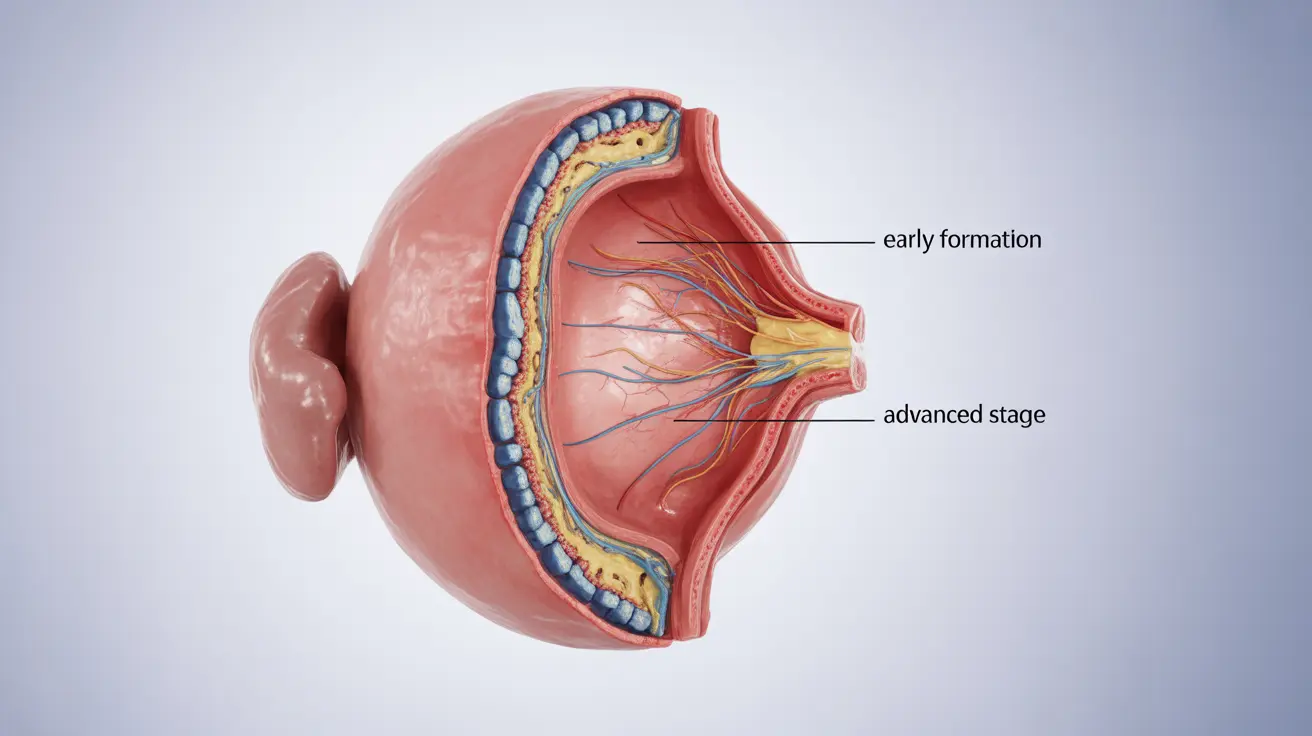An epiretinal membrane (ERM) is a progressive eye condition that affects the macula, the central part of the retina responsible for detailed vision. Understanding the stages of this condition is crucial for proper diagnosis, treatment planning, and managing expectations about visual outcomes.
This comprehensive guide will explore the four distinct stages of epiretinal membrane development, their impact on vision, and available treatment options at each phase. Whether you've recently been diagnosed or are seeking information about this condition, this article will help you understand what to expect.
The Four Stages of Epiretinal Membrane
Epiretinal membranes typically progress through four distinct stages, each with its own characteristics and impact on vision:
Stage 1: Early Formation
During this initial stage, a thin, cellophane-like membrane begins to form on the surface of the retina. Many patients may not notice any symptoms at this point, and the condition is often discovered during routine eye examinations. Some may experience very mild visual distortion.
Stage 2: Mild Symptoms
- Slight blurring of central vision
- Minor distortion of straight lines
- Mild difficulty with reading or detailed tasks
- Subtle changes in depth perception
Stage 3: Moderate Progression
- Significant visual distortion
- Decreased visual acuity
- More pronounced difficulty with reading
- Notable warping of straight lines
- Increased challenges with depth perception
Stage 4: Advanced Stage
- Severe visual distortion
- Significant decrease in central vision
- Marked difficulty with daily activities
- Possible double vision in the affected eye
Diagnosis and Testing Methods
Accurate diagnosis of epiretinal membrane stages involves several specialized imaging techniques:
- Optical Coherence Tomography (OCT): Provides detailed cross-sectional images of the retina
- Fundus Photography: Documents the appearance and progression of the membrane
- Fluorescein Angiography: May be used to rule out other retinal conditions
- Visual Acuity Testing: Measures the impact on vision at each stage
Treatment Approaches Based on Stage
Treatment options vary depending on the stage of the epiretinal membrane and the severity of symptoms:
Conservative Management
- Regular monitoring
- Vision assessment
- Updated prescription glasses if needed
- Patient education about symptoms
Surgical Intervention
- Vitrectomy surgery
- Membrane peeling
- Post-operative care and monitoring
- Vision rehabilitation if necessary
Frequently Asked Questions
What are the four stages of an epiretinal membrane and how do they affect vision? The four stages progress from early formation with minimal symptoms to advanced stage with severe visual distortion. Stage 1 shows minimal impact, Stage 2 presents mild blurring and distortion, Stage 3 involves moderate vision changes, and Stage 4 causes significant visual impairment.
What symptoms should I expect at each stage of epiretinal membrane progression? Symptoms progress from barely noticeable in Stage 1 to severe visual distortion in Stage 4. Early stages may show minimal blurring, while later stages can include significant vision distortion, decreased visual acuity, and difficulties with daily activities.
How is an epiretinal membrane diagnosed and what imaging tests are used? Diagnosis typically involves comprehensive eye examination and specialized imaging, including Optical Coherence Tomography (OCT), fundus photography, and sometimes fluorescein angiography. These tests help determine the stage and severity of the membrane.
What treatment options are available for epiretinal membrane at different stages? Treatment options range from observation in early stages to surgical intervention in advanced cases. Early stages often require monitoring, while later stages may need vitrectomy surgery with membrane peeling.
Can an epiretinal membrane improve on its own, or is surgery always necessary? Epiretinal membranes typically don't improve on their own, but surgery isn't always necessary. The decision for surgical intervention depends on symptom severity and impact on daily activities. Early stages can often be managed with monitoring alone.




